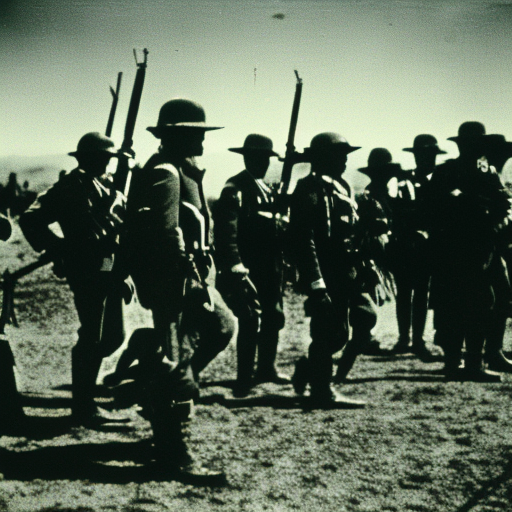Battle of Buena Vista: A Clash of Armies in the Mexican-American War
The Battle of Buena Vista, fought on February 22-23, 1847, was a significant engagement in the Mexican-American War. It pitted the forces of the United States, led by General Zachary Taylor, against the Mexican army, commanded by General Antonio López de Santa Anna. The battle took place near the town of Buena Vista in the Mexican state of Coahuila.
Background:
The Mexican-American War began in 1846 as a result of territorial disputes between the United States and Mexico. The United States, seeking to expand its territory westward, had annexed Texas in 1845, which Mexico still considered part of its territory. Tensions escalated, leading to armed conflict.
Preparations and Deployment:
In early 1847, General Taylor’s forces were stationed in northern Mexico. Santa Anna, the Mexican president and military leader, sought to defeat Taylor’s army and regain control of the region. Santa Anna assembled a force of around 15,000 troops and marched towards Buena Vista. Taylor, with a much smaller force of approximately 5,000 men, positioned his troops strategically to defend against the Mexican advance.
The Battle:
On February 22, Santa Anna launched his attack on Taylor’s positions. The Mexican forces initially gained ground, but Taylor’s troops held their ground and launched counterattacks. The battle raged throughout the day, with both sides sustaining heavy casualties.
By the evening, the Mexican assault had been repelled, and Santa Anna decided to regroup for a renewed attack the next day. However, during the night, many of his troops deserted, leaving him with a significantly weakened force.
On February 23, Santa Anna launched another assault, but his depleted forces were unable to break through Taylor’s defenses. The American artillery played a crucial role in repelling the Mexican attacks. After several hours of intense fighting, the Mexican army retreated, and Taylor’s forces emerged victorious.
Outcome and Significance:
The Battle of Buena Vista was a significant victory for the United States. Despite being outnumbered, Taylor’s skillful leadership and the determination of his troops resulted in a decisive American triumph. The battle boosted American morale and furthered the reputation of Taylor as a capable military commander.
The Mexican army, on the other hand, suffered a significant defeat. Santa Anna’s failure to defeat Taylor’s smaller force damaged his reputation and weakened his position as the Mexican president. The battle also highlighted the weaknesses of the Mexican military, including poor organization and inadequate training.
The Battle of Buena Vista had broader implications for the Mexican-American War. It demonstrated the resilience and fighting spirit of the American forces and contributed to the overall American success in the conflict. The victory at Buena Vista, along with other American victories, eventually led to the signing of the Treaty of Guadalupe Hidalgo in 1848, which ended the war and resulted in significant territorial gains for the United States.
In conclusion, the Battle of Buena Vista was a critical engagement in the Mexican-American War. General Taylor’s skillful defense against Santa Anna’s larger force resulted in an American victory. The battle had significant implications for the outcome of the war and contributed to the United States’ territorial expansion.












